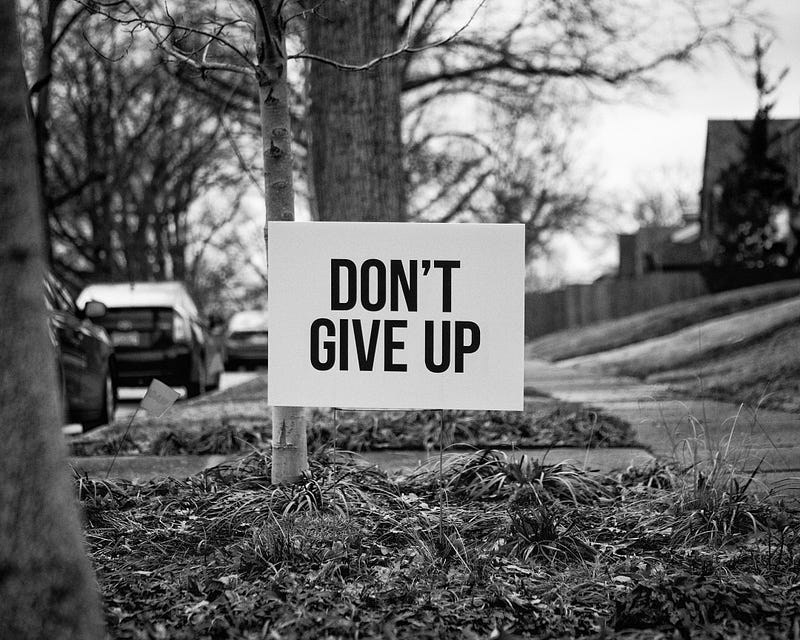Finding the Right Treatment for My Mental Health Journey
Written on
Chapter 1: My Misdiagnosis Journey
In my mental health journey, I have never openly claimed, “I have Borderline Personality Disorder,” mainly because I’ve never received that diagnosis. Over the years, I was misdiagnosed with Bipolar Disorder I and II, but those treatments proved ineffective as I do not actually have those conditions.
Bipolar disorder is characterized by alternating periods of extreme highs, known as mania, and deep lows. It often necessitates medication as part of treatment, and in severe instances, it can lead to life-threatening psychotic episodes during manic phases. I was mistakenly diagnosed with this condition at the age of 14, and the prescribed medications only made my situation worse. At 21, I sought help again, but once more, the treatments were ineffective and detrimental to my health. Most recently, I was given a Bipolar II diagnosis, which involves less severe manic episodes called “hypomanic” states, yet the outcomes were still unsatisfactory.
My experience included intense depressive episodes marked by a lack of motivation to engage in everyday activities, such as getting out of bed or showering. I frequently struggled with overwhelming sadness, and suicidal thoughts were particularly prominent.
I have always been driven and motivated, striving for productivity and organization since my middle school years. This drive is my standard. My extreme lows may have been perceived as a “high” due to my overachieving nature, but it was misleading. While I managed to work over 60 hours a week and pull all-nighters to meet deadlines, it didn’t equate to boundless energy. It took immense effort, often fueled by caffeine, and left me utterly drained.
Sleep has always been crucial for me; I thrive on at least eight hours. I often find social interactions taxing, especially with strangers at work. After a long day of meetings, I frequently retire to bed by 6 or 7 PM, sleeping straight through the night.
A doctor I consulted a few years back diagnosed me with Bipolar II, suggesting many individuals with this condition go undetected because their hypomanic episodes can simply appear as periods of productivity. However, I am not bipolar; I have Major Depressive Disorder, which I manage through medication and self-care practices.
Major Depressive Disorder is a recognized mental health issue, distinct from personality disorders, which typically do not respond to medication. Although I’ve never been diagnosed with a personality disorder, I found immense benefit from a treatment aimed at those with Borderline Personality Disorder.
Two years ago, following a period of relative stability, I experienced suicidal thoughts again. It was during a 48-hour emergency detention at a hospital that I met a young doctor who played a pivotal role in my recovery. He encouraged me to explore Dialectical Behavioral Therapy (DBT). His genuine demeanor and ability to both validate and challenge my thoughts made a significant impact.
We discussed my life, and he introduced the idea of cognitive distortions—misconceptions in my thinking. Initially, I struggled to grasp this concept, questioning how my subjective feelings could be incorrect. However, he urged me to consider the possibility that my most deeply held beliefs might not be accurate and that life could indeed be worth living. Filled with hope, I decided to pursue DBT, realizing that I had nothing to lose.
I was unaware at the time that DBT is commonly utilized for individuals with Borderline Personality Disorder. This therapeutic approach is beneficial for everyone, not just those with specific disorders, especially in teaching emotional regulation skills to children.
DBT encompasses four core modules: Mindfulness, Distress Tolerance, Emotional Regulation, and Interpersonal Effectiveness. The therapy involves practical exercises that foster skills in these areas, aiming to help individuals understand and address the root causes of their behaviors.

Chapter 2: The Path to Recovery
After my hospital stay, I sought out DBT treatment. Initially, it was a struggle to alter my follow-up plan from “attend family therapy” to “attend dialectical behavioral therapy.” Eventually, we agreed on attending both. The next hurdle was locating a provider who offered DBT and accepted my insurance. I eventually found an intensive outpatient program that met my needs, attending three sessions weekly for three hours each, while continuing individual therapy with my outside therapist.
During my intensive outpatient therapy, I discovered that nearly everyone in my group had Borderline Personality Disorder. I found that I could relate to many of their experiences and symptoms.
As my treatment progressed, some participants completed the program while others joined midway. This fluidity meant that not all attendees were diagnosed with BPD, only those present during the initial weeks of my therapy.
Through this process, I recognized my struggle with seeing the gray areas in life. If my experiences mirrored those of individuals with Borderline Personality Disorder, it was likely due to trauma that shaped my perceptions, causing my emotions to fluctuate rapidly. I often found myself feeling suicidal within minutes, or transitioning from heartbreak to elation in mere moments. Therapy helped me identify these emotional swings, usually triggered by interpersonal relationships. Forming connections is challenging for me, making my relationships particularly precious. However, my tendency to become overly attached often led to unhealthy dynamics, whether I was taken advantage of or became obsessive.
Even without a formal diagnosis, my identification with those in my group led me to embrace the treatment that had proven effective for them. The doctor may have seen signs of BPD in me but refrained from making a diagnosis after only a brief interaction. For me, the label was less important than the realization that mental health issues often come without a clear diagnosis, as they frequently lack definitive physiological tests. A diagnosis is just a label for a collection of symptoms.
In mental health, assessments are subjective, making diagnosis an imperfect science. However, having a diagnosis can provide clarity on how to address symptoms. Although I didn’t receive a formal diagnosis, considering the possibility of undiagnosed Borderline Personality Disorder guided my treatment focus.
Since starting to practice DBT skills, particularly those related to emotional regulation, I have built a solid foundation for managing my mental health. Employing these skills is crucial; unlike a daily pill, they require consistent practice. Regular use helps solidify these skills, making them more instinctive. If neglected, I risk reverting to old habits, but with persistent practice, I can cultivate resilience and emotional stability.

My experience with Intensive Outpatient Dialectical Behavioral Therapy occurred about five years ago. In the years since, I have faced significant trauma, but I always returned to professional therapy. Coupled with my emotional regulation skills, this has enabled me to maintain stable mental health. I now feel a sense of recovery.
I never received a formal diagnosis of Borderline Personality Disorder, and whether I had it or not is inconsequential. What truly matters is that I learned how to regulate my emotions, leading to a significantly improved quality of life.
This lyric video titled "Peytan Porter - Therapy" explores themes of mental health and emotional healing, offering a poignant reflection on the journey to recovery.